Tips for small gardens
The Helping Hands team give their top tips for making the most of your small garden.
We think there are three key pieces of advice when it comes to making the most of your small outdoor space:
- Go up – This can be in relation to many aspects of your garden such as planting, construction of a feature piece, or the ground layout you are working with. The ground space you have with may be small, but vertically the sky is the limit.
- Multi-Task – A garden can accommodate every aspect of family life. It can double as a relaxing space some of the time and an adventure playground at others. This will put demands on any garden space, so if one item can cover multiple functions then it saves valuable space.
- Colour – Using the correct colours can brighten up a garden and help it to feel more open. The key is using the right colours and choosing where to use them. Colour will impact all aspects of the garden, not just plants.
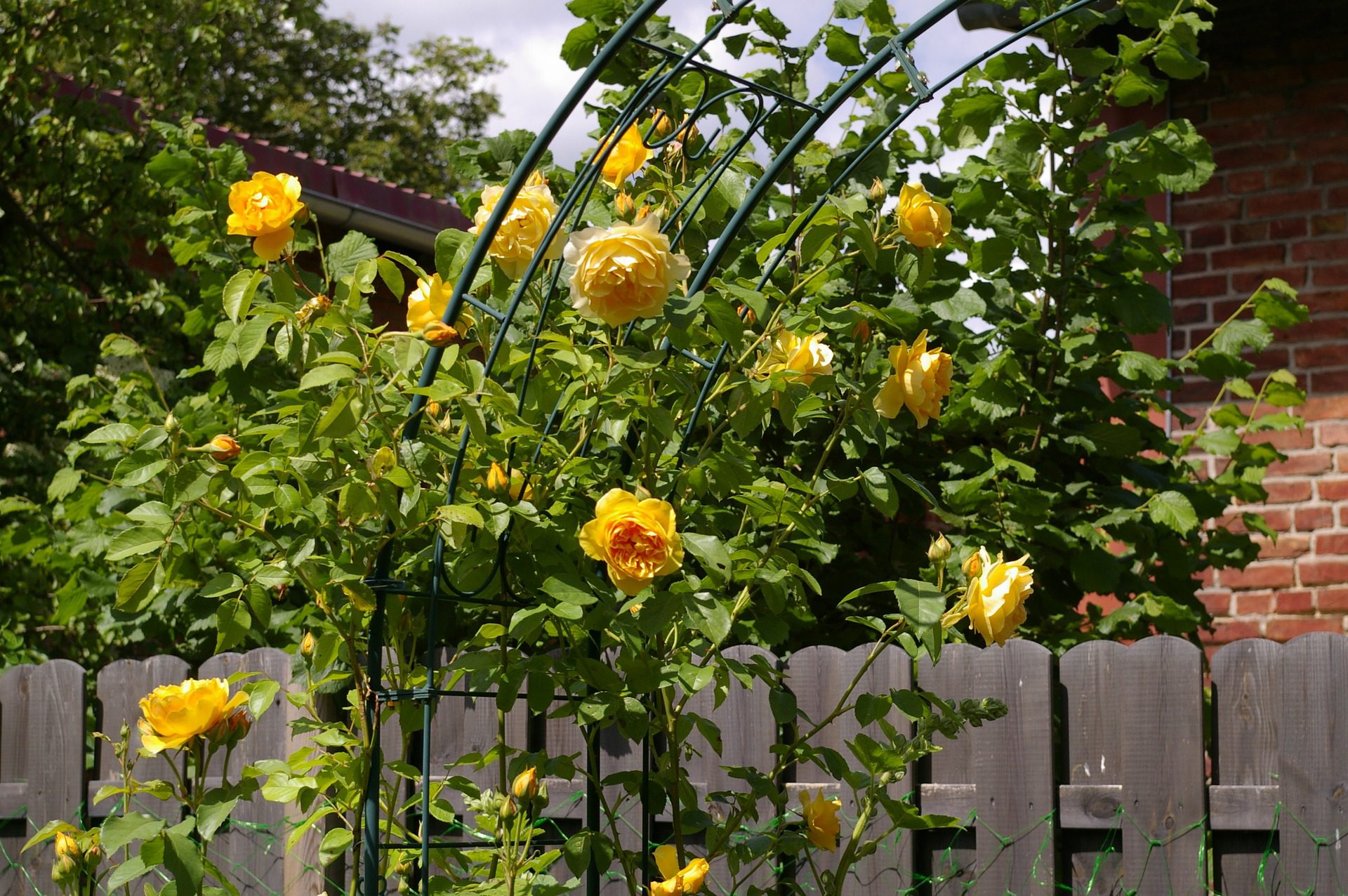
Going Up
Planting
It is important to think about placement when planting. Plants can add a sense of space and brighten a garden up immediately. However, it can ruin how you and your family enjoy the garden if you’re tripping over the begonias every time you step outside, so you need to be careful not to overwhelm the floor with plants.
Living walls are a great way to add planting to your small garden without the space being overtaken by them.
Living walls are suitable for growing a variety of plants, including herbs and some fruit and vegetables. What you are able to grow depends on how much light your living wall will get. For shadier walls (less than half a day of summer sun) lettuce, parsley, rocket, runner beans and spinach would grow well. Sunnier walls would be more suited to basil, cherry tomatoes, chives and strawberries.
Below is a great example of this and information on how to create a living wall can be found on a DIY blog here >>
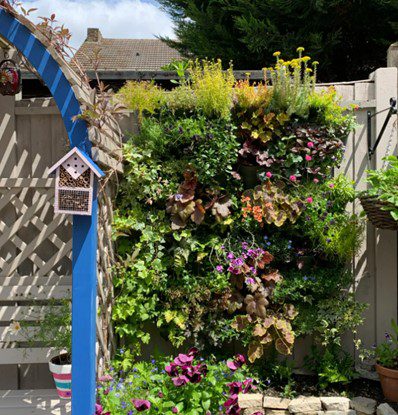
Climbing plants are another way to create height in your planting. Common climbing plants like Ivy can take over and even cause damage to structures such as fences and brick walls over time. Plants such as Clematis will give you the same effect as something like Ivy, but without these potential hazards. It is important to do some research into which plants will be most suitable to use depending on where the plants will be trailing and how much light they can expect to get.
A trellis added to a planter, as below, can be a neat way of giving your garden the height it needs whilst controlling where the plant goes. The planter also encloses the root systems of the plants, which can otherwise spread over a vast area if planted directly into the ground. This garden blog has some information on which plants would work best in for a smaller trellis, as well as some good planting and pruning advice.
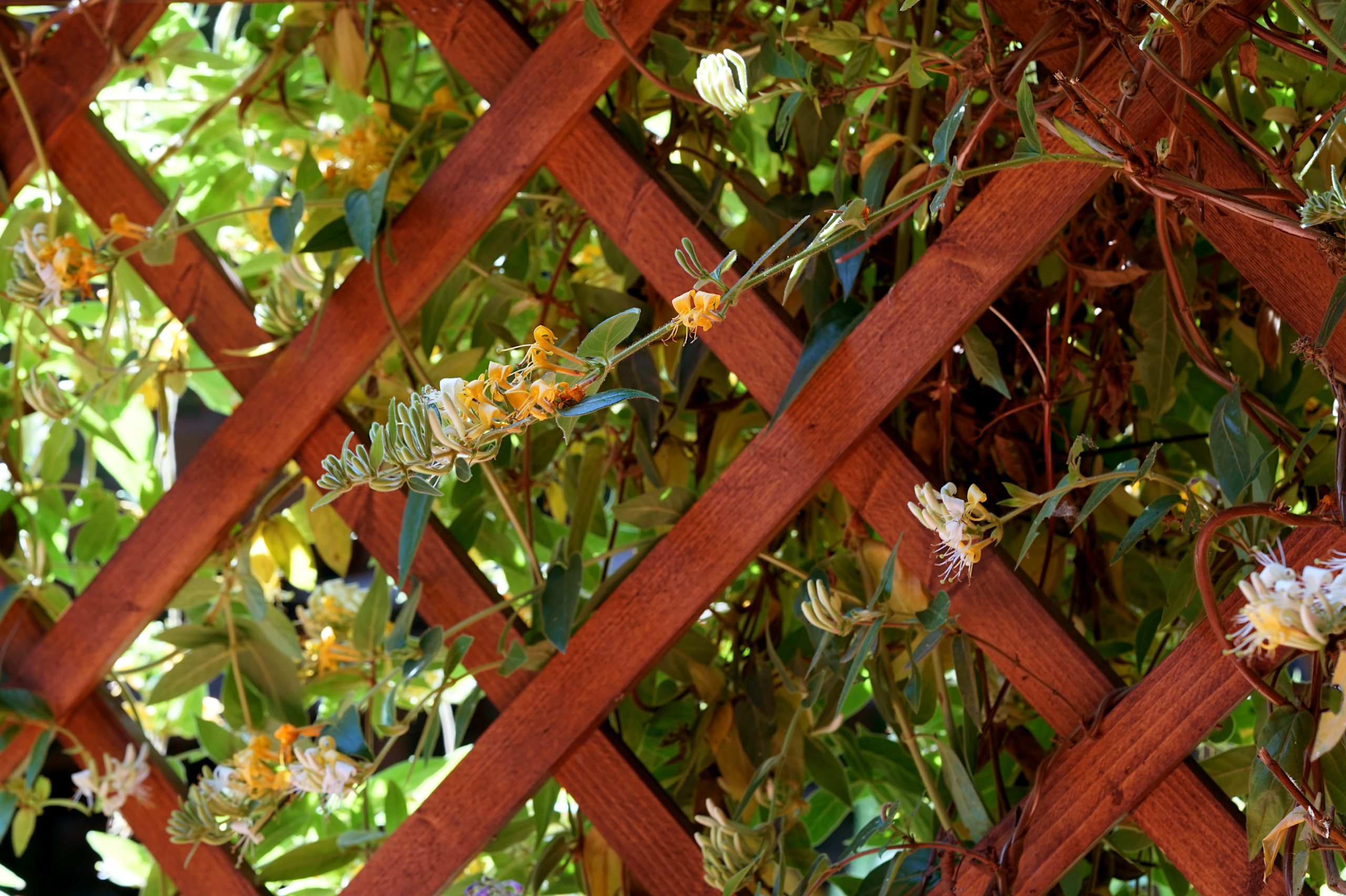
Colour tip – Our perception of size is affected by colour. Bright, dominant colours such as orange and red will steal focus and can be placed in the forefront for great effect. Cooler colours, such as blues and greens, in turn give a perception of depth and should be used at the far end of the garden.
Pergolas
A pergola can add an eye-catching focal point to a garden and help create space. In keeping with the ‘Going Up’ rule, a pergola can be used to place some garden essentials vertically, freeing up space on the ground.
Pergolas can be bought or made in a variety of styles, including vintage, ornate, and contemporary. It is worth researching which pergola is right for you depending on how you want to use it and the aesthetic you are hoping to achieve.
Pergolas are versatile and can be used for climbing plants, lighting and even seating. Below are some examples of how they can be used. You can also combine the various features of different pergolas, for example by having trailing plants climbing the uprights as well as a suspended chair or bench.
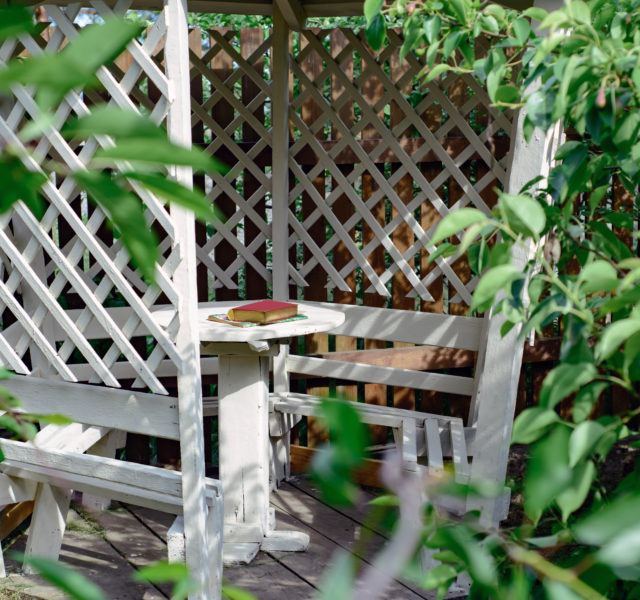
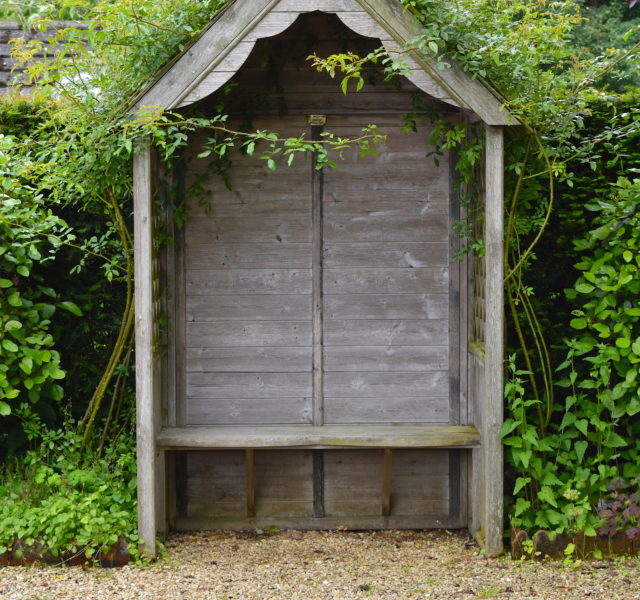
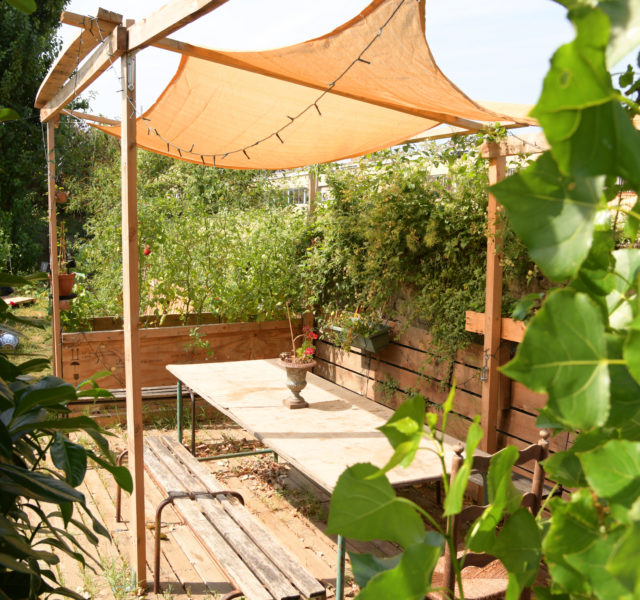
Raising Levels
Uneven ground or a steep slope can make a garden unusable, especially if your child has extra mobility needs. One of the best ways of improving your uneven garden without having to dig out an unreasonable amount of earth is to create multiple level areas. Adding levels into a garden changes the perspective and makes it appear more spacious. It can help to create more space that is usable, as the individual levels in the garden will be even.
An example of a WellChild Helping Hands garden makeover that was able to create a usable, multifunctional space for the whole family from a small and very steep garden can be seen below.
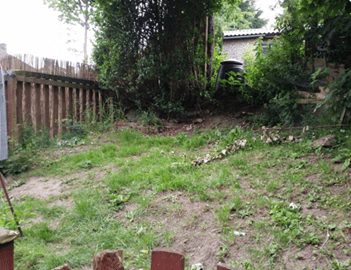
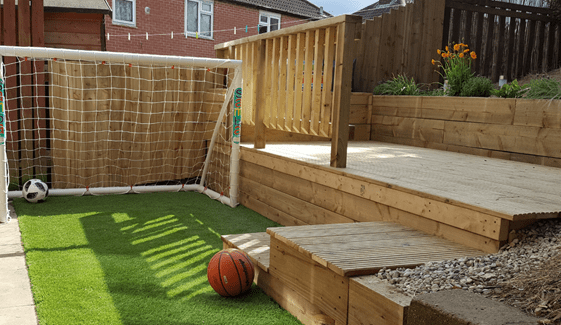
Ramp Gradients and Widths
Creating a garden on multiple levels can be a big project, and it is important to take access between the leveled areas into account. You will need to do some careful calculations to ensure that any ramps you make to improve access are wide enough and not too steep.
The recommended gradient (steepness) for a wheelchair ramp is 1:20. For example, for a ramp to go up by 10cm it would need to be 200cm long. However, steeper gradients may be acceptable over short distances depending on the type of wheelchair and the needs of the user, down to a ratio of 1:12. In that example for a ramp to go up 10cm it would only need to be 120cm long. The minimum width for a wheelchair access ramp is 90cm, but we would recommend extending that up to 120cm if you have the space. If you are building a ramp or other access route that needs to go around a corner, then that ‘turning circle’ should be a minimum of 120cm x 120cm.
Multi-Tasking
Seating/Storage Space/Planter
By adding some hinges to traditional bench seating, you can create outdoor storage for garden toys and other items that are not used all year round, without taking up additional space. These storage benches can also be used in conjunction with a planter to store planting tools and supplies.
Low walls or planters with a purposefully thicker edge are also very useful as extra seating. A great tip for creating a calming sensory area in planters like these is to use fragrant plants such as Lilac or Lavender, or even some edible herbs such as Basil or Mint.
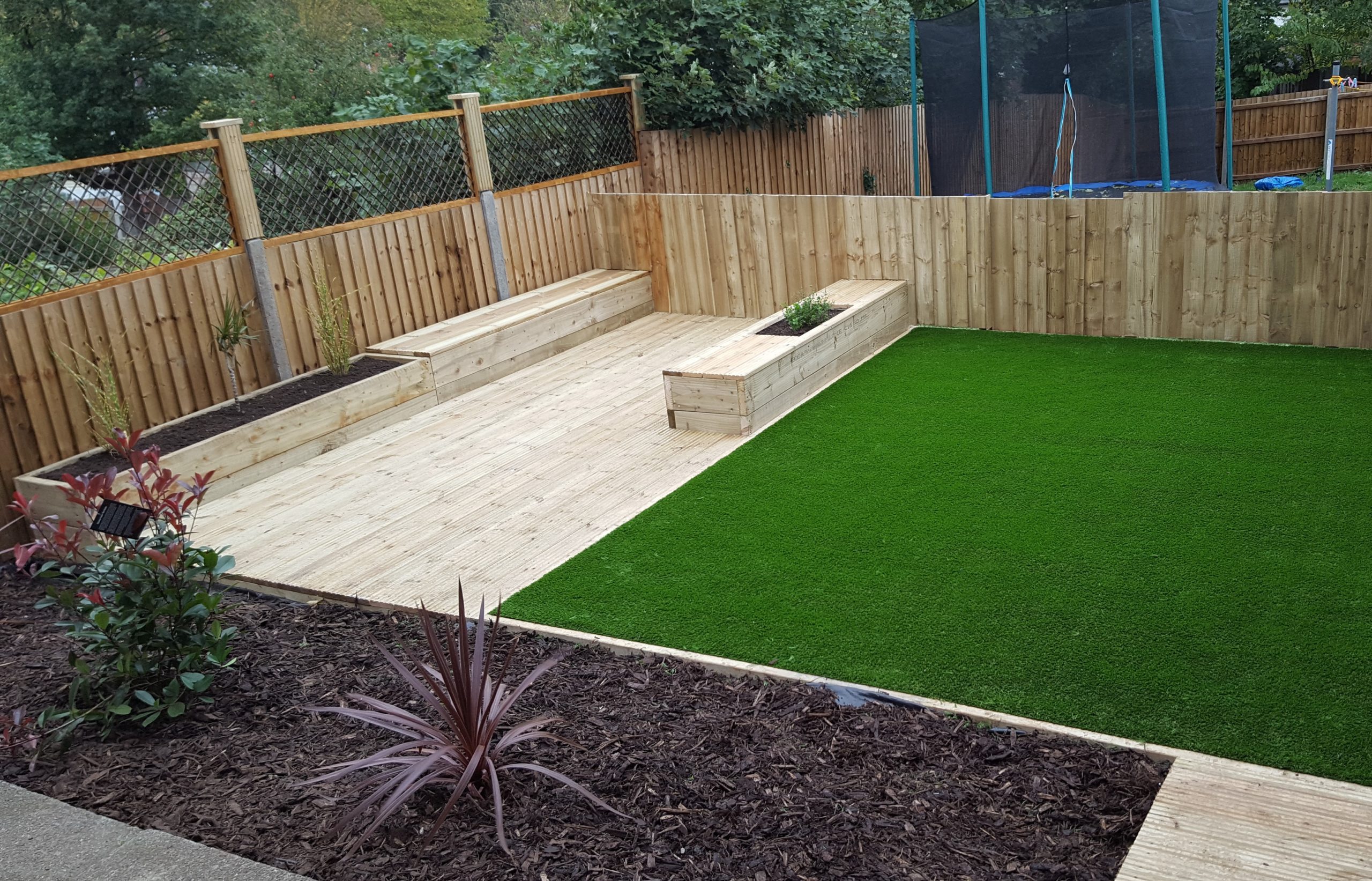
Playhouse/Toy Storage
Playhouses are great for a child’s imaginative play and come in many shapes and sizes to fit the area available. They can also house children’s play equipment and even bulkier garden items in the winter. Prefabricated playhouses come in various designs that may suit your garden. It should be noted that they can be quite expensive, will require some work to construct and may not be suitable for every garden. Make sure to check the measurements before you buy a playhouse, and also find out what tools you might need to put it together as they are usually delivered flat-packed.
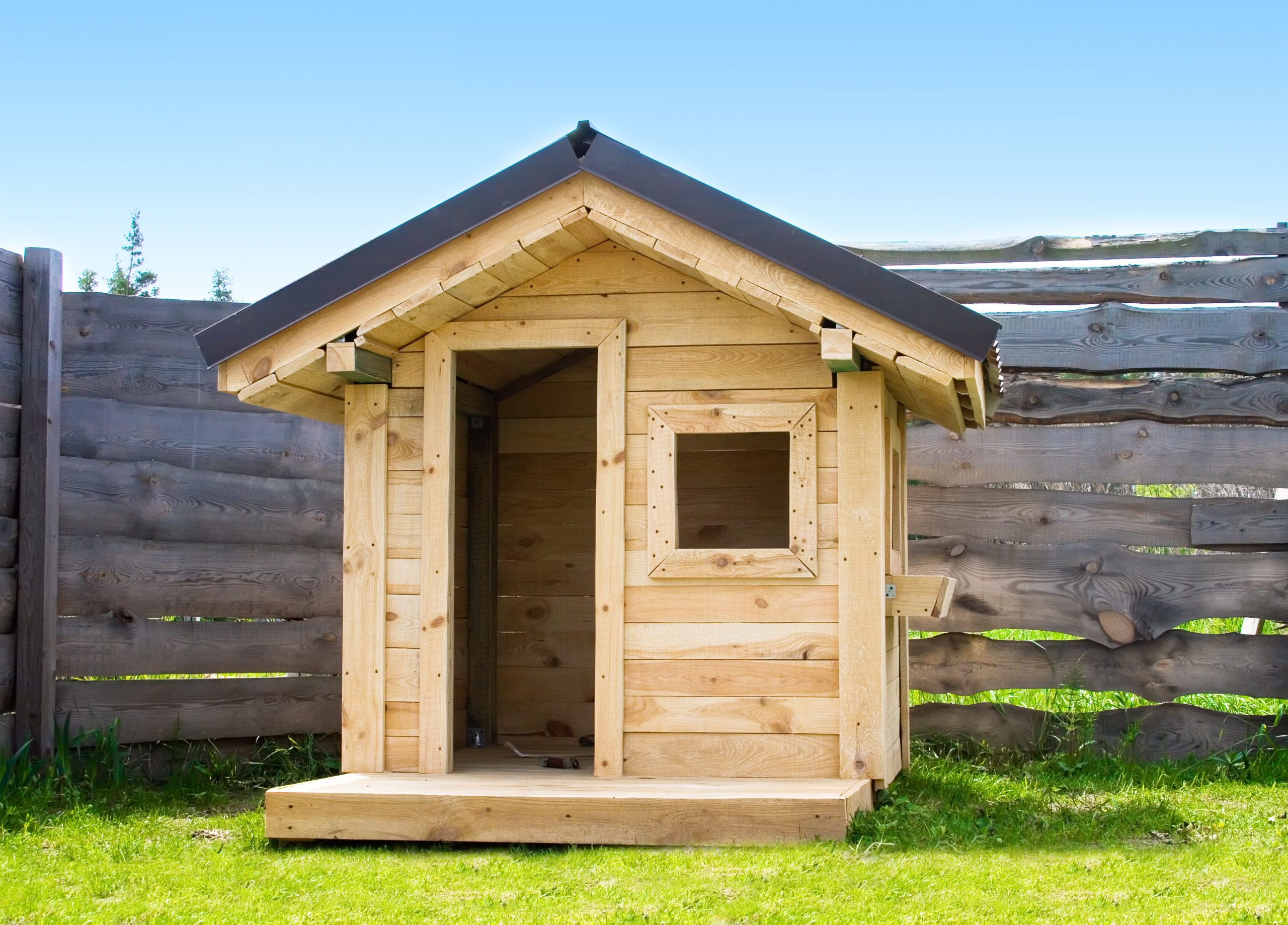
Colour
Furniture
Brightly coloured garden furniture can brighten up any space and make it feel more inviting. Even a single piece of brightly coloured furniture can change how we view a garden. Splashes of colour on furniture, which contrast against the backdrop, can also extend into the children’s play areas. Varying non-matching bright colours can also work to brighten up any space, as the example below shows.
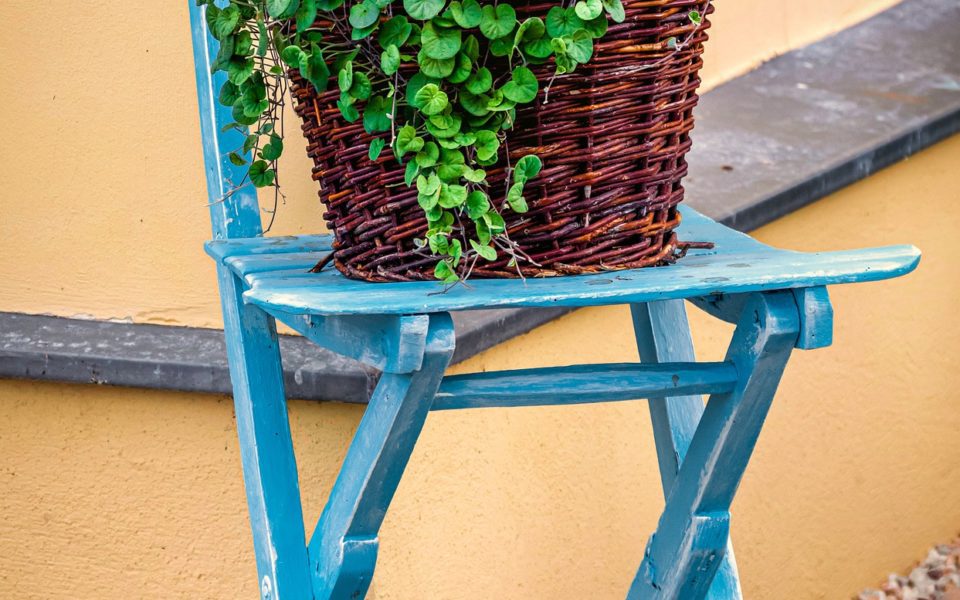
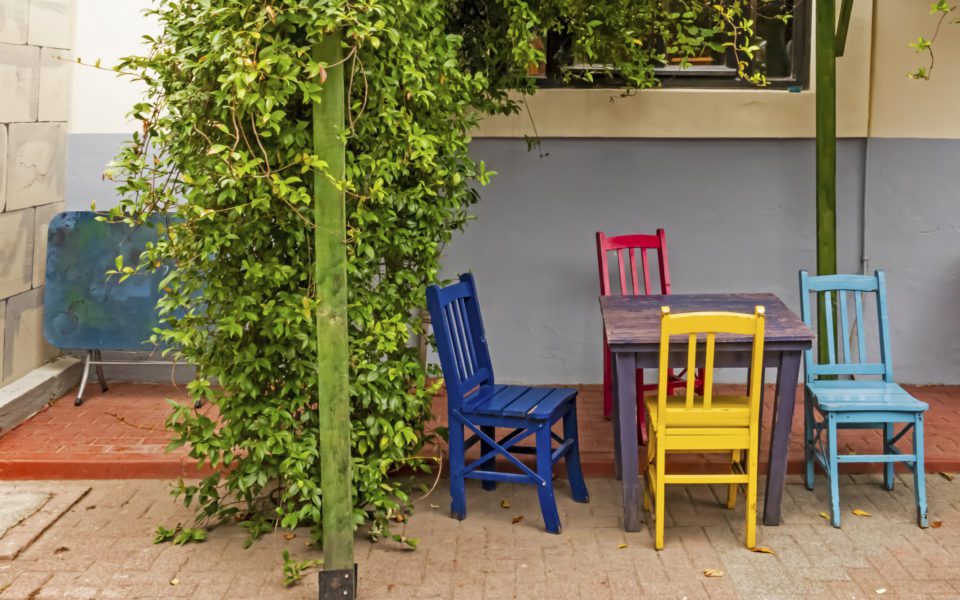
Colour Borders
As with an interior room, lighter walls can make the space feel larger than it actually is. Lighter walls and fences will continue to reflect light outside and can make your garden seem more spacious. You can continue this into the furniture choices for a more subtle relaxing look; or you could use brighter statement pieces, which combined with surrounding white walls will really stand out.
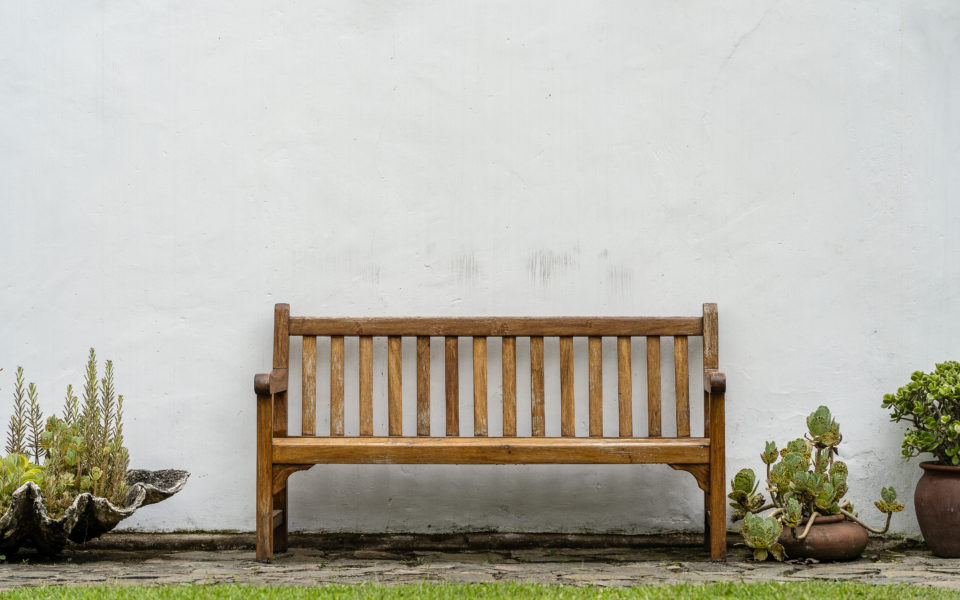
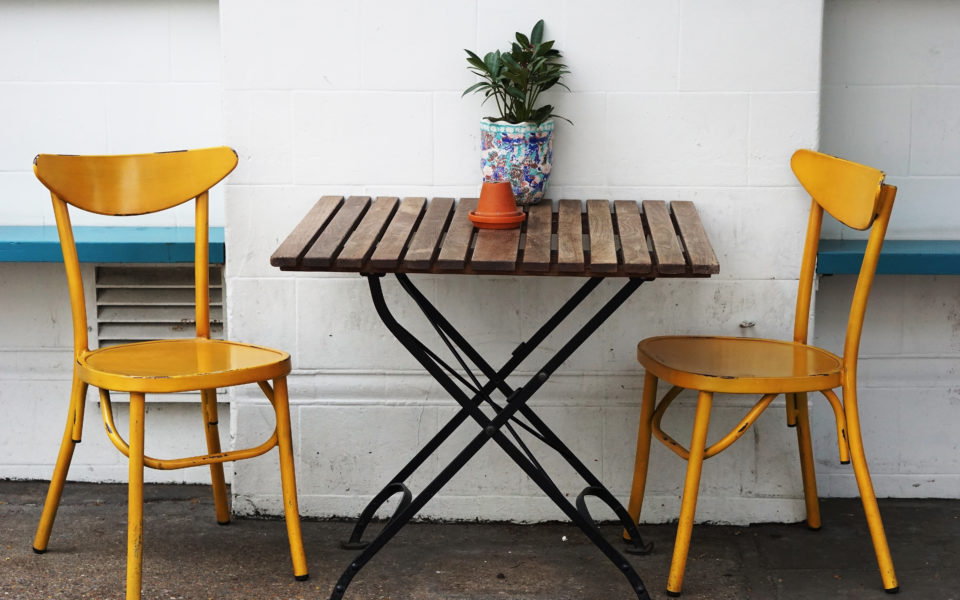
Please don’t forget to leave feedback on this article by clicking the smiley face!
The Helping Hands Team
First published: May 2021
Last reviewed: November 2023
Next review: November 2024




